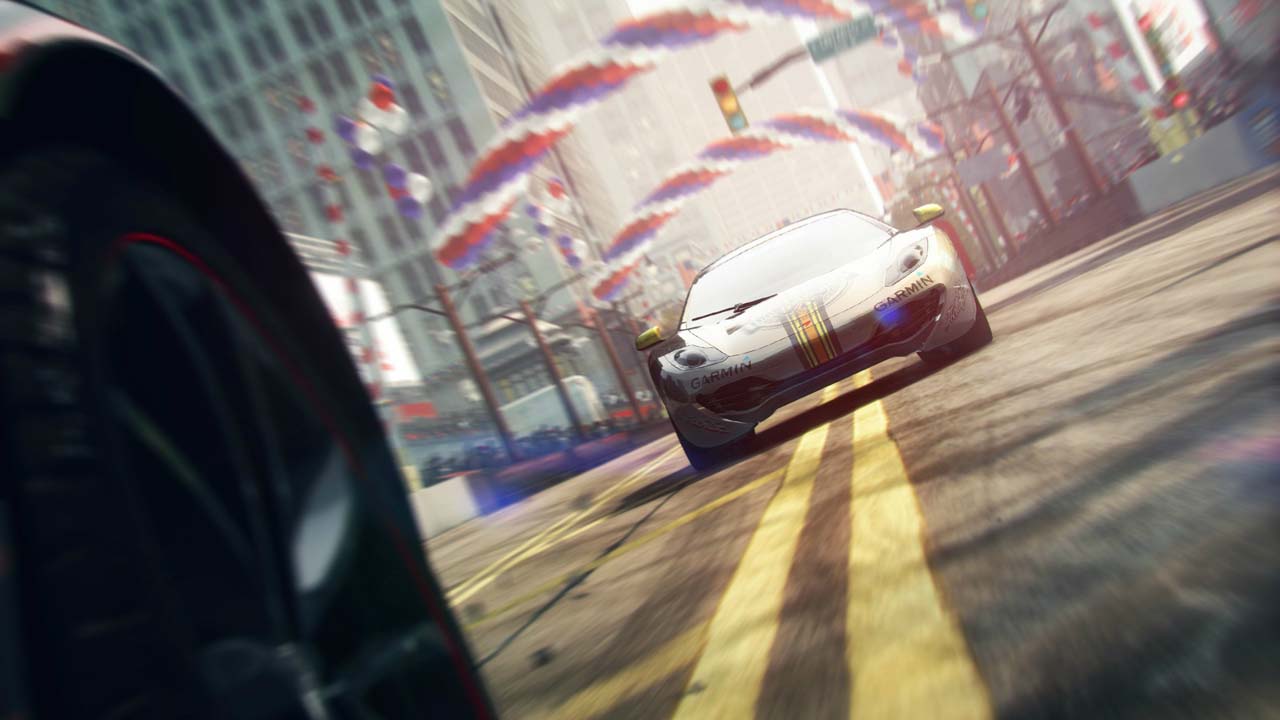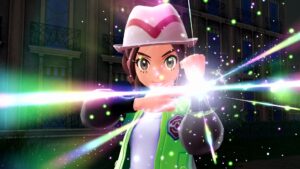
We recently interviewed Iain Smith, Producer on GRID 2 and have plenty of new details about the game. We had a chat about how GRID as a franchise has evolved over the past few years, the absence of the cockpit view in the game and how Codemasters are preparing for next generation consoles.
Check out the full interview below.
Ravi Sinha: GRID 2 sure took its sweet time to be revealed. The original Race Driver: GRID was released to critical acclaim back in 2008. What took so long when it came to developing GRID 2?
Iain Smith: I think for exactly the reason that it was such a critical success, meant that it had to be handled correctly when creating a sequel. To do the original game justice we wanted to ensure it had time to breath; for us to finesse the correct concept for it before taking it into production.
We’ve learned and developed a great deal since the original, so we were in a really good place once GRID was set off into full production. There is a lot of respect for the achievement that GRID was in the studio, so we knew that a sequel needed to be an even more impressive feat.

Ravi Sinha: When looking back on the original, what did you want to improve most with GRID 2? Which gameplay features did you want to implement that wouldn’t have been possible 5 years ago?
Iain Smith: The original game was all about the race, and first and foremost with GRID 2, we had to deliver that experience. With GRID 2, the race returns. Achieving that has taken months of work across the board – the race experience from the ground up has been improved, we almost deconstructed things and asked “How can we improve this, how can we immerse the player as a driver?” So, fundamentally, the driving has been improved.
When the player drives in game now, the physics simulation for the vehicle is running at 1000 hertz. This means that even at the speeds the supercars get up to in the game, we’re sampling the terrain under the vehicle’s wheels quickly enough to then tell the player what to do about it, how to adapt their approach and keep the vehicle under control. In addition, we’ve made big advances with our AI, after all, you need opponents to make it a race.
"We never want any of the race events to just be ticked off like a checkbox – they should each be filled with drama and excitement."
So we’ve added to our cache of AI parameters, allowing us to almost pick and mix characteristics for drivers for how they behave on track. My favourite improvement with the AI is the dynamic element – if you push them out of their comfort zone, they’ll begin to behave differently to the standard nature; conservative drivers might be driven to make contact with you to secure a podium if you put them in a tight spot. It’s all to play for on the track.
Beyond purely technical improvements, a big thing for us in order to make sure the game had a solid grounding, and a reason for being was to create a narrative wrapper that informed your racing experience. Where GRID saw you go to the USA, Europe and Asia in quite an abstract way, through the floating shelves with event cards in them, GRID 2 fully integrates this into a storyline, a reason for you to be travelling to these locations, as you help entrepreneur Patrick Callahan build a single World Series of Racing. We never want any of the race events to just be ticked off like a checkbox – they should each be filled with drama and excitement.
Ravi Sinha: GRID 2 will be the first Codemasters title to utilize the new EGO 3.0 engine. What kind of new graphical and physics-based features can we expect to see?
Iain Smith: EGO is really an evolving platform, so it’s been in constant development from one game to the next. As I mentioned already, we’ve made leaps with our physics model, so to touch more closely on the graphics improvements, we’ve really improved the way in which we light cars within the environments.
A pet peeve of mine has always been that cars in games can look like a shiny showroom model, whilst the environment looks lived-in and rustic. They can just stand out like a sore thumb. With the development of our spherical harmonics system, we get accurate calculations for the lighting of the car based on the position of it within its surroundings. It really helps to make the vehicle look and feel grounded in the game world.
Ravi Sinha: In light of recent racing games going open-world, what is the impetus for making GRID 2 a traditional racing game? Will we perhaps see an open world adventure in the next game?
Iain Smith: This is actually a really good question, because we have been inspired to some extent by open world. The benefits for open world are obviously fantastic, but it does jar somewhat with the concept of “racing”. With GRID, the game is about racing; getting your vehicle from one place to another before everyone else, so open world doesn’t work perfectly for that purpose, exploration doesn’t lend itself to that focus and drive that a true race experience requires.
"The goal of TrueFeel is to ensure the player is always engrossed in the driving action, and that cars are true to character whilst being intuitive enough to get to grips with."
This is why we developed the LiveRoutes feature. LiveRoutes have some of the benefit of open-world – they allow us to bring new, unique experiences to the player from moment to moment, but still with an overriding goal and purpose. Essentially LiveRoutes is a system whereby the junctions in a city track will dynamically swap in the background, to plot out a new track for the player at every turn. It will choose whether you go left, right, straight on or U-turn as you drive.
So not only are you getting a different overall experience from a normal track, you can also be experiencing the same corners in different ways because the sequences are always different.
Ravi Sinha: The series, along with Colin McRae Rally, has always tried to provide a realistic experience but one that even average racing fans can enjoy. GRID 2 is no exception with the new TrueFeel handling system. How does this set the game apart from hyper-realistic titles like Gran Turismo or arcade racers like Need for Speed Most Wanted?
Iain Smith: Firstly, I think titles like Gran Turismo are setting out with different goals to ours. With GRID 2, the intention is to bring the sense of drama, tension and speed of racing to the player. We try to evoke this by any means possible in the game. We perhaps define “realism” slightly differently – we want the game world to have soul and to feel alive – from the garage you work from, the particle effects you kick up on track or the crowds you’re there to entertain.
We want a sense of occasion at the race events; a selection of only the most iconic vehicles that we hone tirelessly, a narrative wrapper for the game, which gives the player a singular goal and driving force behind their actions. And as you mention, the handling model plays an integral part in achieving this goal of realism and immersion too.
The goal of TrueFeel is to ensure the player is always engrossed in the driving action, and that cars are true to character whilst being intuitive enough to get to grips with. I think that’s a real differentiator for us – we get the tech specs and we ensure that the base model for that handling is precise to what the manufacturers give us, but when you translate that through a wheel peripheral or game pad, it’s not always going to feel quite right with just numbers and specifications plugged in.
So we bring in professional consultants who have driven the cars we’re building to give us an acid test – a measure of whether what they’re playing really stands out as the character of the vehicle, and what we can do to improve.

Ravi Sinha: GRID 2 won’t include a cockpit view. Games like DriveClub, despite being for the next generation PS4, heavily emphasize detailed cockpits. Even if 5 percent gamers used this view in the previous game, what’s to say that number hasn’t gone up in the past 5 years?
Iain Smith: This subject has come up a number of times, and I’d actually point your readers in the direction of a blog post on the Codemasters forums for a detailed response on it. Essentially, we get our telemetry data from across all of our racing titles over the last five years and have a whole range of stats to support this.
It was decided during production that for the game overall, in terms of our resources, and in terms of what we’re bringing to the gamers – all of them, not just a proportion of them, that it was best to do this. Our call to action to gamers is that the improvements we’ve made elsewhere need to be played to be believed; so get the game and play it yourself. We are confident you’ll love the driving experience, and see exactly the benefits that this decision has brought.
"We want to lock the player into the GRID racing world from the moment they turn the console on, keeping them in that world. That’s why the garages from GRID have come back. "
Ravi Sinha: Do you feel that the line between realism and fantasy in racing titles is being eroded with the next generation of consoles?
Iain Smith: I think with every big hardware improvement the industry goes through that line will continue to erode regardless of the game genre, but I don’t think the distinction will ever fully go away no matter how impressive the tech. You still need to ask the player to suspend their disbelief and come on a journey into the game world. With a more mature audience than ever, perhaps that’s becoming a bigger ask, so the better the presentation of the product the better, but still – people know that what they’re playing. The question of immersion has been pivotal in GRID 2.
We want to lock the player into the GRID racing world from the moment they turn the console on, keeping them in that world. That’s why the garages from GRID have come back. Nothing breaks the sense of involvement and sense of being within a world like flat UI screens and menus – so the player navigates the experience from inside their garage – which itself will evolve and change over the course of the career mode of the title. So you’re not only in that world in the race events themselves, but everything that goes between them.
Ravi Sinha: Speaking of next generation: When can we expect a GRID title on the PS4 or next Xbox? Are there currently plans for any other titles from Codemasters to release on next generation platforms?
Iain Smith: Of course we’re working hard in the background of GRID 2 to ensure we’re ready for next gen but have no specific titles to announce right now. With GRID2 however, we already feel we are delivering on many of the promises of next-gen here and now. It’s our most social and connected ever title, with RaceNet delivering a persistent connection into your GRID2 world through web and mobile devices.
We let gamers share their greatest moments through our YouTube upload feature direct from game replays and look also at the work we have been doing on PC, already supporting 4K TV technology for the ultimate in high-definition gaming.
Ravi Sinha: Sony recently announced the PS4 along with an impressive 8GB GDDR5 RAM. How do you think this will help future racing games from Codemsters?
Iain Smith: As I mentioned before, with GRID 2, we really deconstructed the systems and looked at anything we could improve, so with the likes of the advancement we’ve made with speed we’re running our physics simulation at on this generation, the mind boggles at what is possible with the new tech.
We will no doubt be taking the same approach to next gen – examining each area of a title and seeing what can be achieved.
Ravi Sinha: With GRID 2’s extensive automobile collection, will we see any additional vehicles and modes arriving via DLC sometime in the near future?
Iain Smith: Yes, there’s definitely more to come. We already have a really comprehensive game as far as content is concerned but we’ll be revealing the complete details for our DLC plans around launch time.
Note: Special thanks to Rangebar Merani from 47 Communications for setting this interview up.















